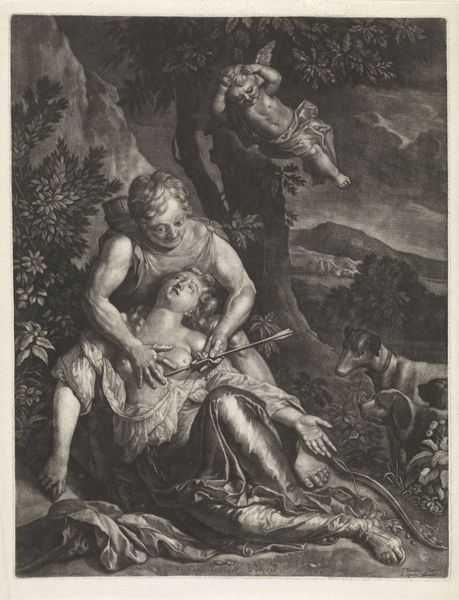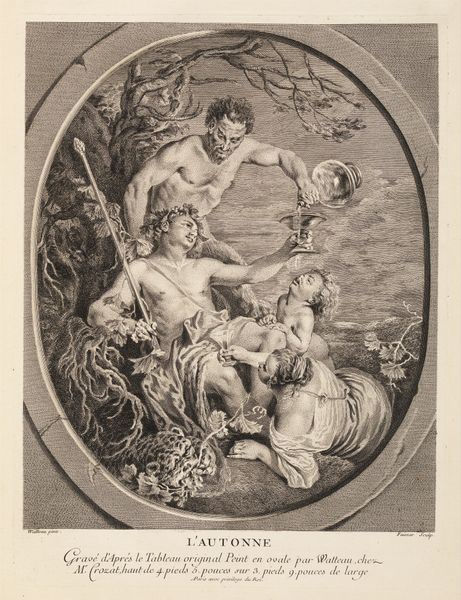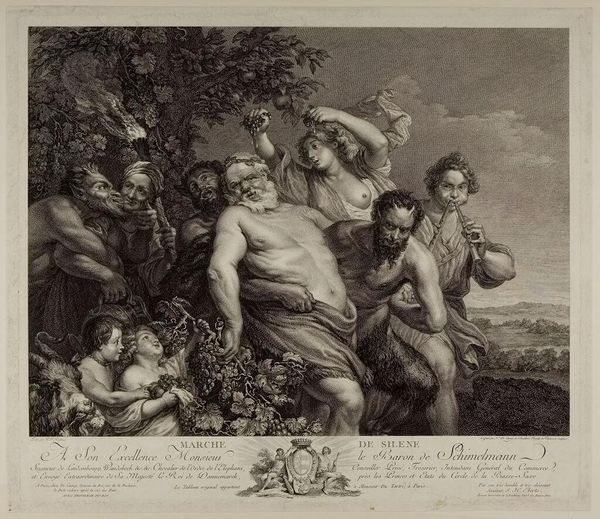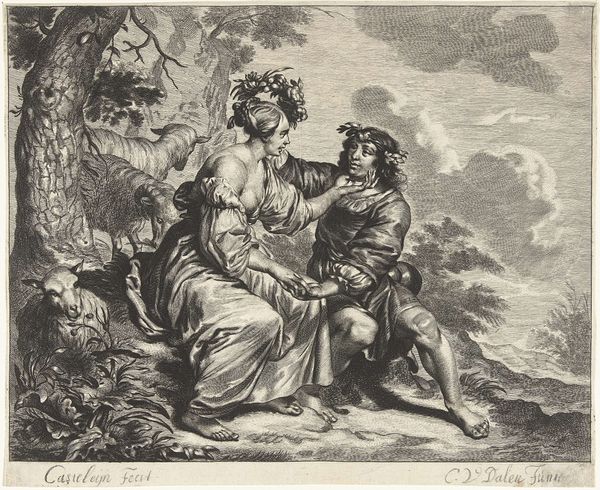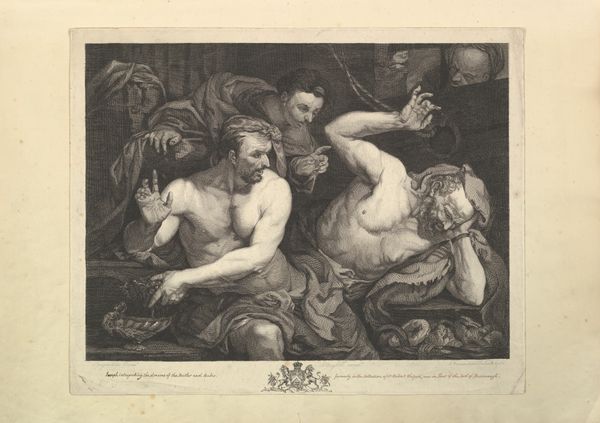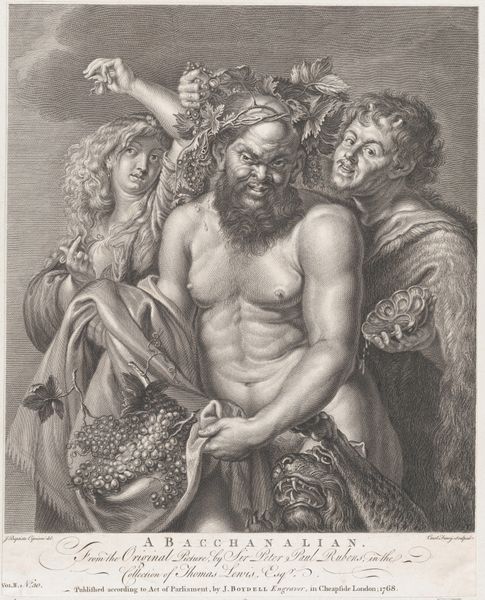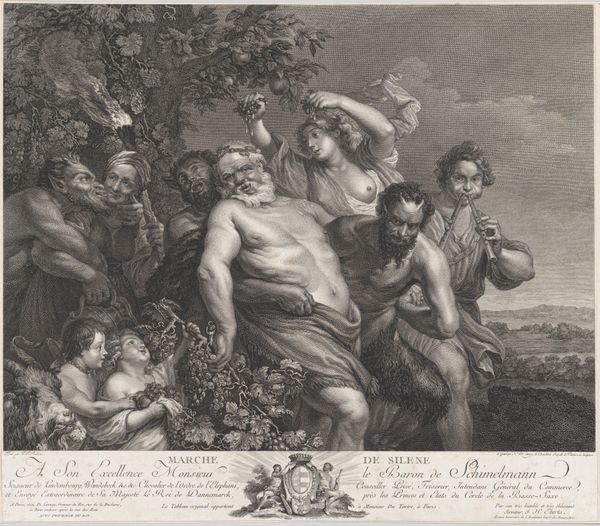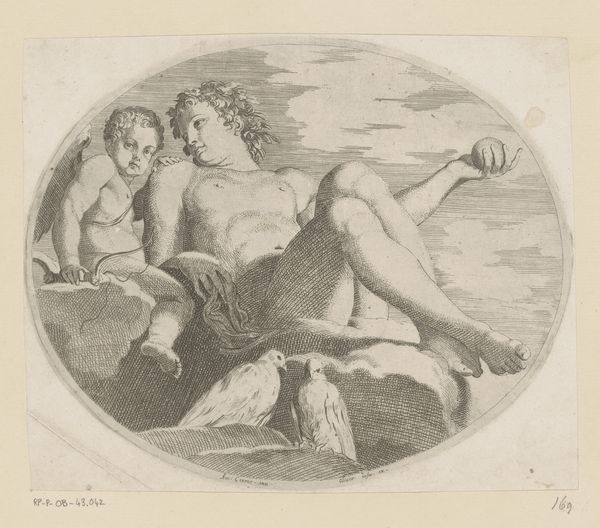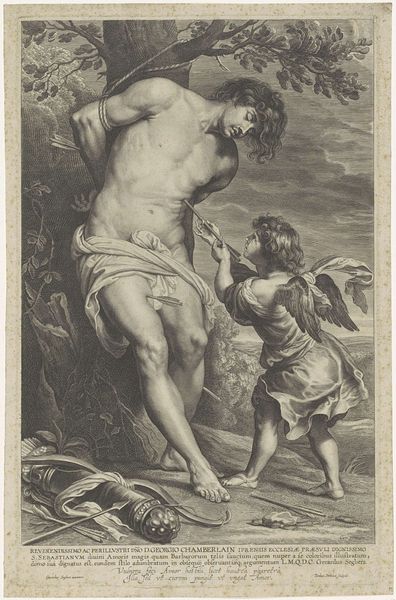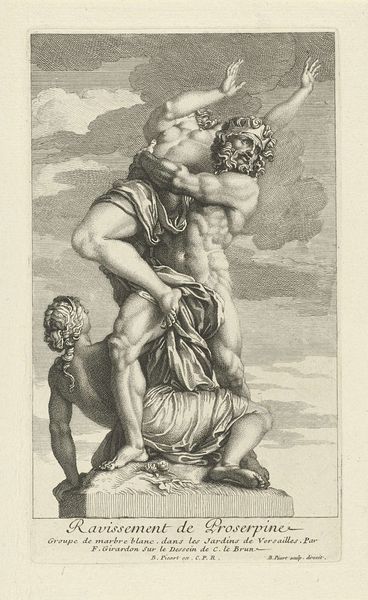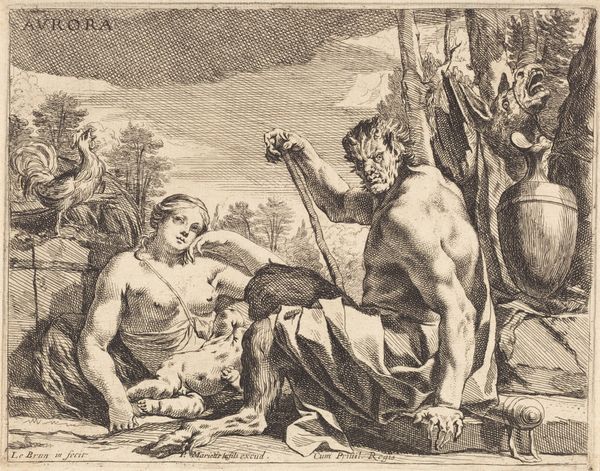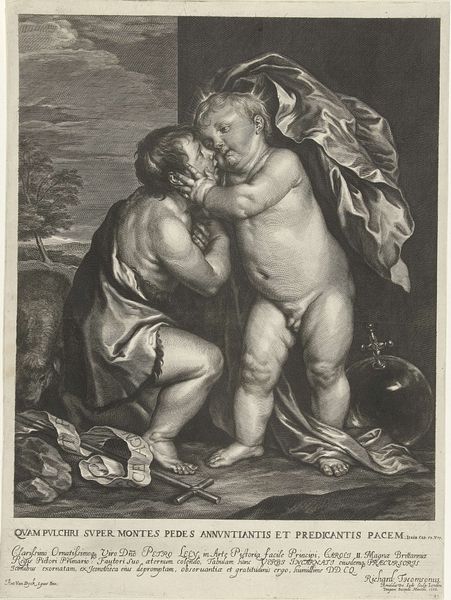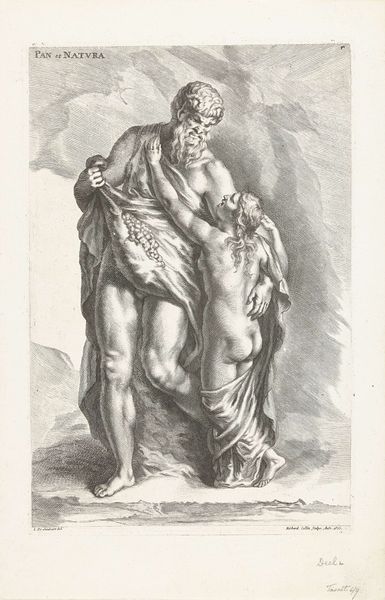
print, engraving
#
portrait
#
allegory
#
baroque
# print
#
figuration
#
fruit
#
portrait drawing
#
genre-painting
#
history-painting
#
nude
#
engraving
#
erotic-art
Dimensions: height 403 mm, width 473 mm
Copyright: Rijks Museum: Open Domain
This engraving of a satyr and bacchante was created by Alexander Voet II in the 17th century. It presents a revelrous scene, dominated by symbols of unrestrained pleasure. The satyr, a being of the forest, is adorned with grapes and vine leaves. These are ancient symbols of fertility, ecstasy, and, of course, the intoxicating power of wine, linking us back to Dionysian rituals of antiquity. Consider how these motifs have migrated through time. In classical sculpture, figures like Silenus, often depicted with similar attributes, symbolized wisdom born of intoxication. Yet, here, the focus seems to be less on wisdom and more on raw, sensual indulgence. The bacchante, with her gaze of longing, represents the allure and danger of these intoxicating forces. The enduring appeal of such imagery taps into our collective memory, reminding us of the ever-present tension between reason and primal instinct. The satyr's leering grin is not just a depiction but an invitation to confront the wild, untamed aspects of ourselves. It resurfaces through the ages, each time colored by the anxieties and desires of a new era.
Comments
No comments
Be the first to comment and join the conversation on the ultimate creative platform.
